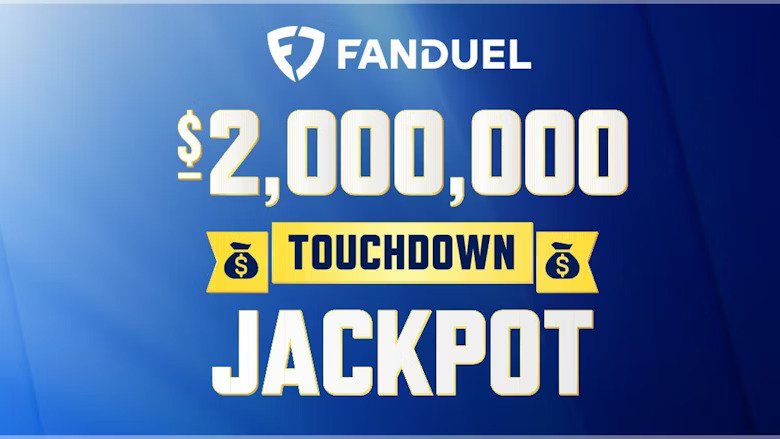Kalshi vs Polymarket: Which One’s For You?
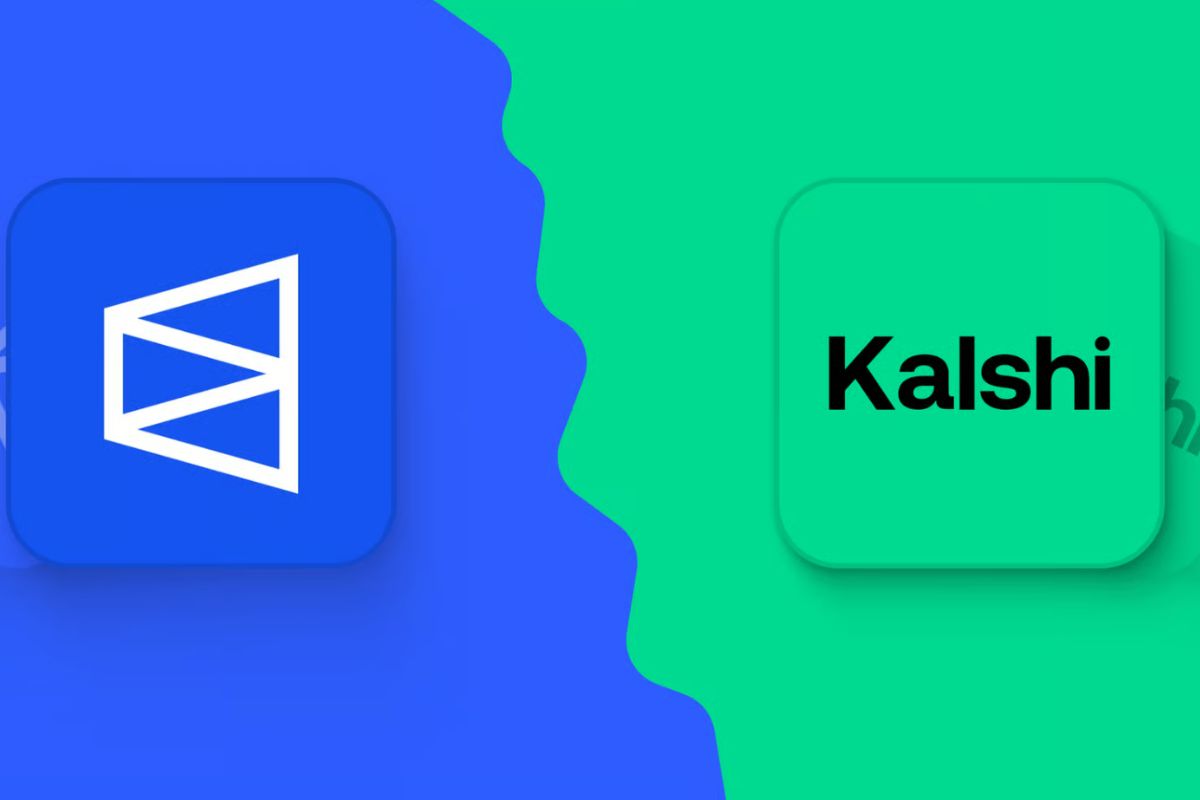
Kalshi vs Polymarket is a choice between rails and rules. Kalshi is a U.S.-based event-contract exchange regulated by the Commodity Futures Trading Commission (CFTC) designed for U.S. users, while Polymarket is a decentralized prediction platform that runs on crypto rails with global reach and U.S. access limits on its global site.
Prediction markets let people trade shares on future events. Prices move between $0 and $1, and they mirror the crowd’s view of probability. That model has pulled in prediction market enthusiasts from both finance and crypto: you can act on current events in real time, test views against market depth, and, on Polymarket, see on-chain settlement.
If you want U.S. regulatory oversight and a fiat-first flow, Kalshi is a good fit. If you want quicker listings and access to wider niche markets, and you’re comfortable with crypto wallets on a decentralized platform, Polymarket fits.
Kalshi vs Polymarket: Overview and Key Takeaways
| 🔮 Platform | Kalshi | Polymarket |
| 🎁 Promo | No U.S. promo currently available | |
| 💰Promo Code | None confirmed for U.S. users | |
| 📖 Terms & Conditions | To be announced | |
| 🌎 Legal States | AL, AK, AR, CA, CO, CT, DE, FL, GA, HI, ID, IN, IA, KS, KY, LA, ME, MA, MN, MS, MO, NE, NH, NM, NY, NC, NV, ND, OK, OR, PA, RI, SC, SD, TN, TX, UT, VT, VA, WA, WV, WI, WY, DC | Global platform currently restricted to non-U.S. users. A regulated U.S. version is expected to launch soon. |
| 📱 Mobile App | Apple iOS & Android Users | Apple iOS & Android Users |
| ✅ Info Last Verified | [dateformat f="MMMM dd, yyyy"] | [dateformat f="MMMM dd, yyyy"] |
Kalshi operates under the Commodity Futures Trading Commission as a Designated Contract Market (DCM), meaning it operates with U.S. regulatory oversight and lists approved event contracts.
Polymarket, on the other hand, operates as a decentralized model that uses USDC and smart contracts, favors speed and variety, and has historically restricted U.S. users on its global site.
You can expect differences in licensing, market types (approved event contracts vs yes/no pools), withdrawal and deposit fees, and the technology stack (exchange order book vs on-chain settlement).
What are Prediction Markets
Prediction markets are pretty simple: you trade shares on future outcomes, usually binary yes-or-no contracts priced between $0 and $1. A “Yes” share that resolves true pays $1, false pays $0. You can buy, sell, and hedge along the way, so prices move as news hits and sentiment shifts.
How is this different from traditional sportsbooks or your stock app? Unlike a sportsbook, there's no oddsmaker setting the line. A prediction market platform runs an order book where user participation sets the price, aka information moves the line, not a house. When market depth is strong, you’ll see tighter spreads and cleaner exits, and when it’s thin, you’ll feel slippage.
So, why the pull for prediction market fans? The allure is clear: you can price current events in real time, from economic prints to political events to sports markets (on some venues, you’ll even see clearing transactions recorded publicly). Long story short, the prediction market space rewards speed, research, and timing.
The Role of the Commodity Futures Trading Commission (CFTC)
Kalshi operates under U.S. federal regulatory oversight as a DCM with the CFTC. In practice, that means listings, surveillance, and rule enforcement are built into the U.S. derivatives framework. Kalshi was the first federally regulated U.S. prediction exchange of its kind, and that status is the reason Kalshi works for U.S. users with approved event contracts.
Why Polymarket Operates Differently
Polymarket is built and operates as a decentralized platform. Markets settle on-chain in USDC, with outcomes verified transparently. The platform also operates globally, but it's not CFTC-regulated for U.S. users, and real-money access is restricted in some jurisdictions. Costs look different, too: instead of a posted fee schedule, you’ll mainly encounter network gas and wallet flows tied to its decentralized model.
Kalshi vs Polymarket: History and Legality
Kalshi was founded in 2018 and, in 2020, the platform earned official recognition from the Commodity Futures Trading Commission as a DCM. From there, listings expanded under federal rules, with court and agency milestones shaping which contracts could appear and when.
Polymarket launched in 2020 as a decentralized platform. In 2022, a CFTC settlement led the global site to restrict real-money access for U.S. traders. Since then, Polymarket has worked globally while staying close to the U.S. path. Different rails, different referees, same goal.
Kalshi’s Regulatory Approach
Kalshi operates under U.S. derivatives rules with a formal listing process, surveillance, and a clear route for handling disputes. That structure goes hand in hand with risk-conscious traders who want regulatory oversight and an exchange playbook. If you come from finance, the cadence feels familiar: list, supervise, settle.
Polymarket’s Decentralized Model
Polymarket operates on-chain. What does that mean? Markets are collateralized in USDC, trades execute on-chain, and settlement is public. The upside is transparency and global reach. The limitation is the U.S., where the global product restricts real-money access. Just know it's a decentralized platform first, with compliance and its regulatory process handled differently than a federally supervised exchange.
Kalshi vs Polymarket: Markets and Trading Options
Both venues sit squarely in prediction markets tied to current events. Kalshi lists approved event contracts on an exchange order book, while Polymarket lists yes/no markets on chain and usually posts niche markets faster when headlines break. Your preference is speed and breadth on a decentralized model, or an approved list under a federal exchange.
Popular Kalshi Markets
- CPI releases and related inflation ranges
- Federal Reserve path, such as total rate cuts this year
- Government shutdown timelines, U.S. election markets
- Sports structured as event contracts with an order book

Popular Polymarket Markets
- Elections and leadership outcomes worldwide
- Global sports outcomes framed as yes or no
- Tech launches and pop-culture moments that spike participation
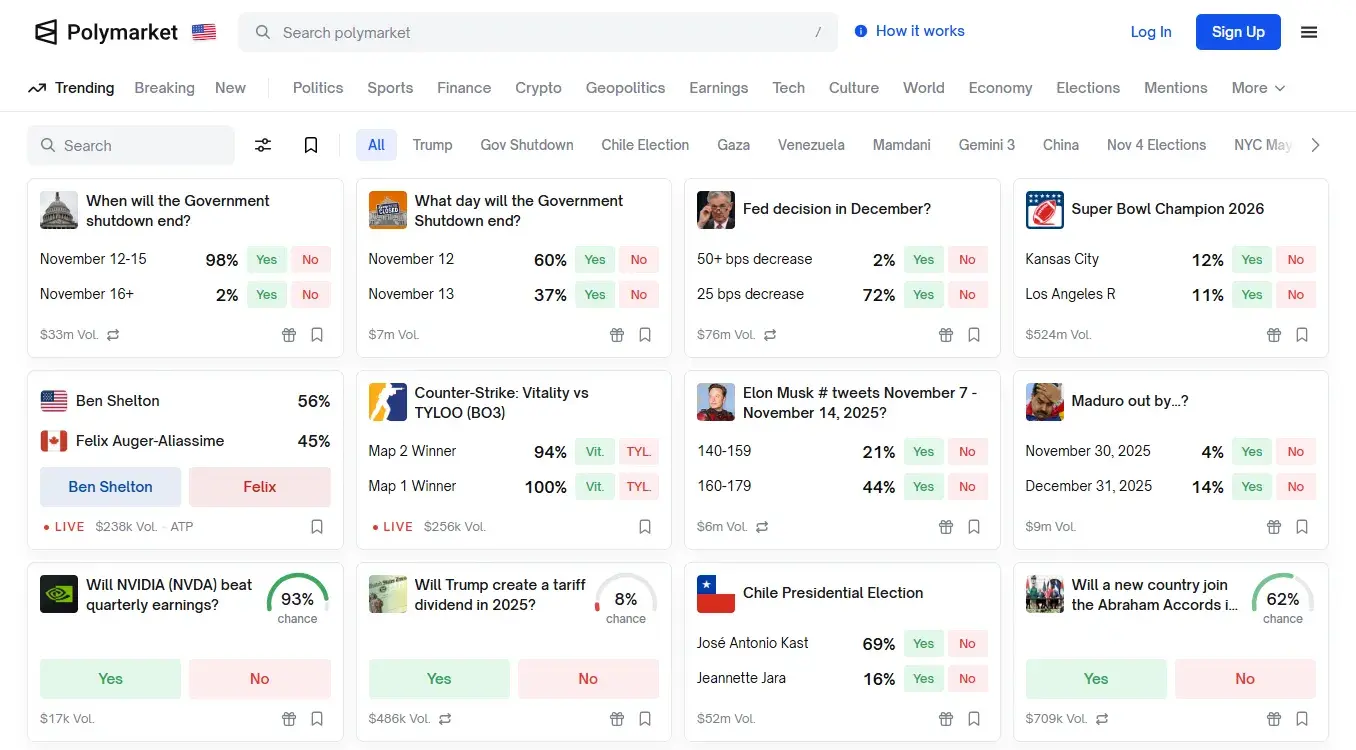
Kalshi vs Polymarket: User Interface and Experience
Both have web and mobile versions, but they feel different once you use them. Kalshi reads like a brokerage screen with lists, filters, charts, and a straightforward order ticket. Polymarket leans into Web3 conventions with market cards, a simple buy/sell panel, and on-chain receipts for each fill. If you want an account-based flow, Kalshi is cleaner. If you want on-chain transparency, Polymarket is the fit.
Kalshi User Interface
Compact dashboard. Market lists you can scan quickly, compact charts for context, and an order book that makes sense if you’ve traded stocks or options. The layout helps when you’re tracking a ton of releases at once and need to manage risk without going through menus.
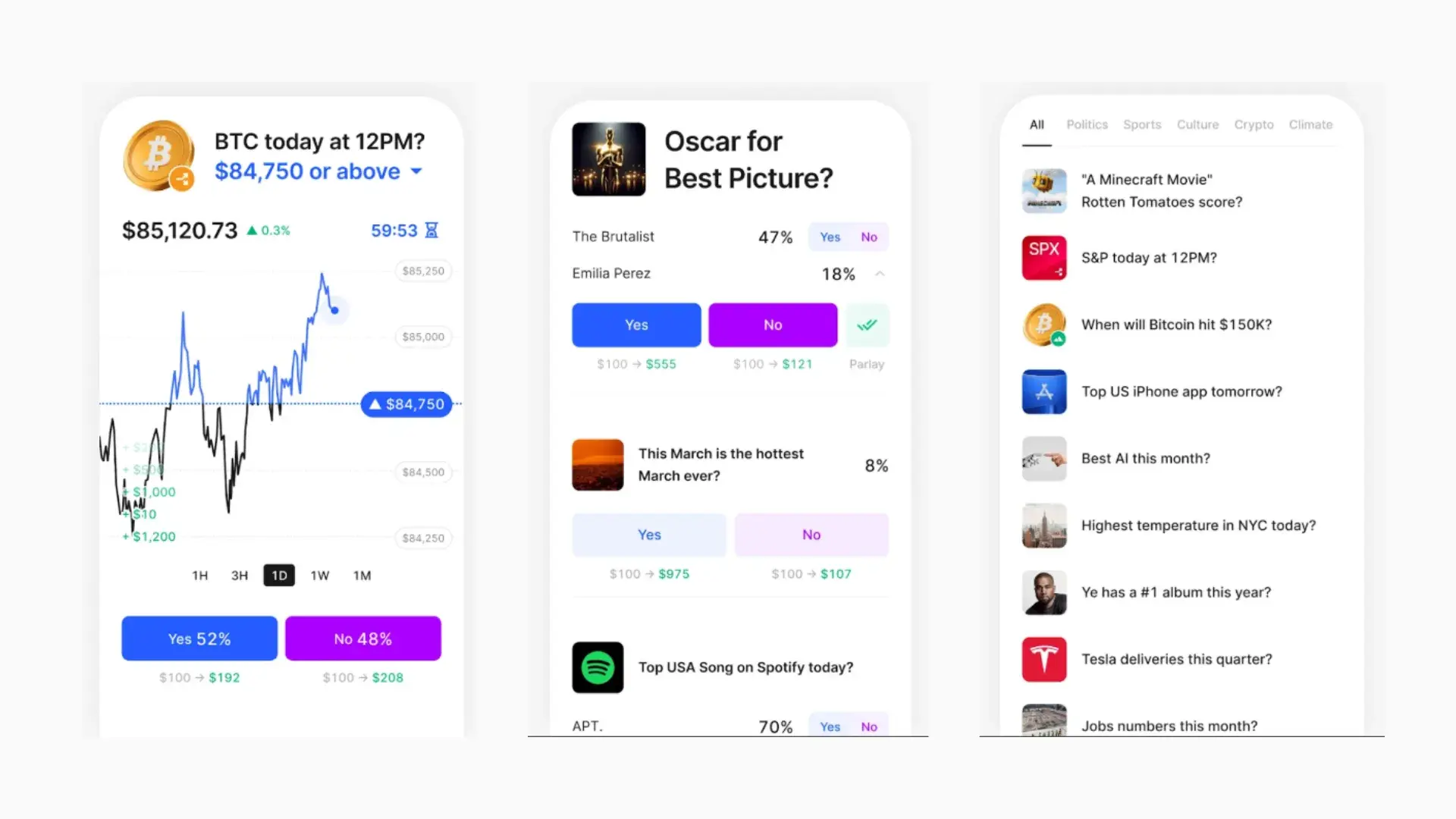
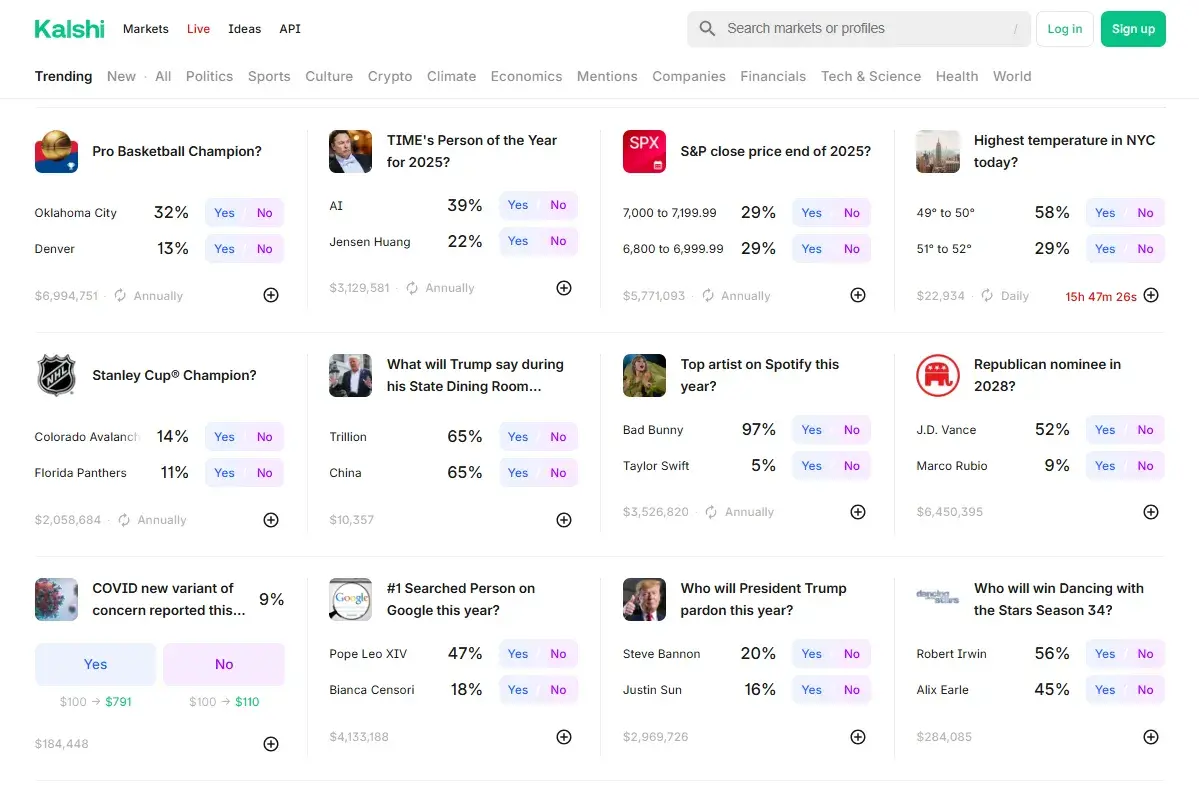
Polymarket User Interface
Card-style markets with live price curves and a wallet-first flow. You fund in USDC, place your trade, and you can see settlement on-chain. Once you’re set up, you can react to headlines quickly and keep a permanent record of each move.

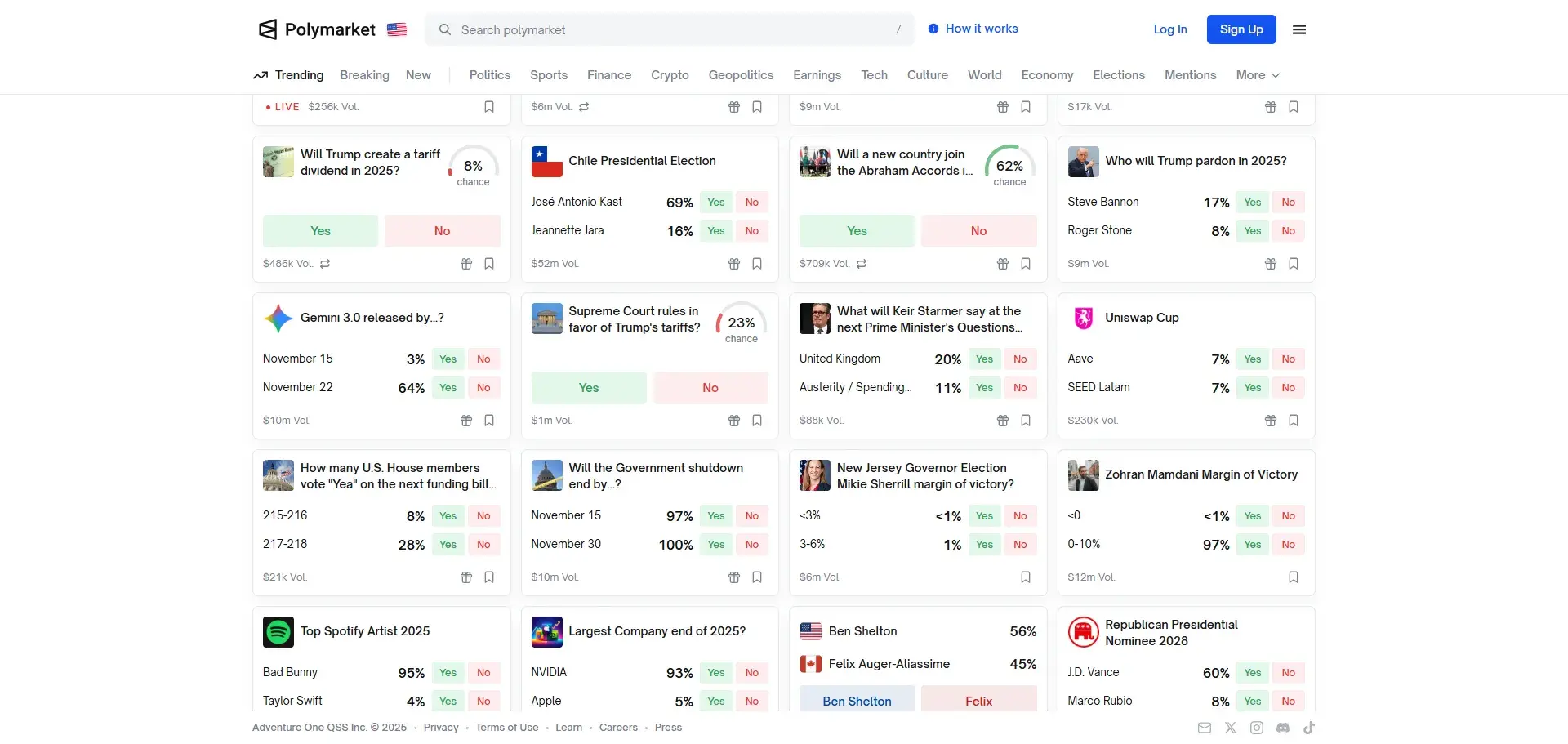
Trading Fees and Market Depth
Kalshi fees
Posted fee table with exchange, regulatory, and clearing costs. Kalshi users also earn variable interest on cash and open positions, which can offset friction over time. As distribution expanded and depth improved, closing a trade during data releases or news spikes is faster and closer to the quoted price.
Polymarket costs
No platform fee on the global website, but you still pay gas. Depth is strongest in marquee stories and thinner in some niche markets, so fills are easiest when attention is high. When interest fades, slippage shows up.
Bottom line
For a published fee table and an exchange playbook, Kalshi works in that lane. For on-chain settlement via smart contracts, and you’re fine with gas, Polymarket works. Your call in the Kalshi vs Polymarket matchup comes down to rails, comfort with crypto, and where you expect the best price for your read.
Latest Predictions on Kalshi and Polymarket
Both platforms cluster around catalysts you can circle on a calendar.
- Macro: CPI, PCE, jobs, Fed meetings. Prices jump before and after.
- Politics: primaries, debates, vote counts, shutdown deadlines. Liquidity builds, then resets.
- Culture/tech: launches, headline trials, awards weeks. Micro-markets (like surprise trailer drops) go live quickly after headlines, especially on Polymarket.
- Sports: game outcomes, player awards, season milestones, and headline moments across leagues like the NFL, NBA, MLB, and college football.
In short, prediction markets price news in real time, and Kalshi and Polymarket spike when the window is clear.
Kalshi vs Polymarket: Pros and Cons
One is an exchange with a rulebook, the other is a crypto-native venue with on-chain transparency. Your choice depends on rails, speed, and comfort with wallets.
| Operator | Pros | Cons |
|---|---|---|
| Kalshi | -Federal oversight -Clear prediction exchange -Structure posted fee table -Interest on cash and open -Positions improving market depth | -Listings need approval -Some markets arrive late or not at all -Kalshi charges per-trade and per-contract fees -Some categories face extra scrutiny |
| Polymarket | -Global access on a decentralized platform -Fast listings -Wide niche markets -No platform trading fees on the global site -On-chain settlement via smart contracts | -U.S. real-money access restricted on the global site -Depth varies by headline strength -Gas applies -Oracle or network delays can affect resolution |
So, Which Prediction Market Platform Fits You?
Choose Kalshi if you want a rule-driven prediction market platform with a posted fee table, account-based funding, and an interface that feels like a brokerage. You value regulatory oversight, and you prefer an exchange cadence.
Choose Polymarket if you want a decentralized model with faster listings and broader niche markets, and you are comfortable with wallets, USDC, and gas. You value public on-chain receipts and global reach.
In short, pick the rails that fit how you trade, your tolerance for crypto workflows, and where you expect the best price given market depth. Both matter to the emerging prediction market industry. One prioritizes supervision and a listing process, the other prioritizes speed and transparency on-chain. Different routes, same aim: turn information into prices so traders can act on their read of the world.
Kalshi vs Polymarket FAQs
What are prediction markets?
Prediction Markets are exchanges where users trade contracts on future events, with prices reflecting the crowd’s implied probability. It’s a prediction market platform built for information trading, not parlays.
Is Kalshi legal in the United States?
Yes. Kalshi operates as a DCM under the Commodity Futures Trading Commission, so it can operate legally and list approved event contracts within that regulatory process.
Can U.S. users access Polymarket?
Polymarket restricts U.S. users from real-money trading, though non-U.S. regions with a more permissive regulatory environment can participate. U.S. users can still view markets and outcomes.
Which platform has lower trading fees: Kalshi or Polymarket?
Kalshi uses a posted trading fees schedule. Polymarket’s global site has no platform fee, but you’ll pay blockchain gas and any costs tied to liquidity and crypto deposits.
How do smart contracts power Polymarket?
Smart contracts on Ethereum (via Polygon) hold collateral, execute trades, and record settlement on-chain, so results are transparent without a central clearinghouse. That decentralized nature is the core design choice.
Are prediction markets replacing traditional betting platforms?
No. Prediction markets offer outcome-based payouts, but they operate under different legal frameworks than online sportsbooks and rely on market pricing rather than a house. Groups like the American Gaming Association also treat them separately, with different oversight and ethical controls.
What are the current Polymarket and Kalshi offers?
Polymarket doesn’t currently have any active promotions for new or existing users. Kalshi offers a referral bonus program available to verified users who invite friends to join the platform:
Featured News
-
 FEATURED NOV 13, 2025
FEATURED NOV 13, 2025NFL Odds Week 11: Jets vs. Patriots in TNF; Plus Lines, Spreads, Betting Trends for All 15 Games
-
 FEATURED NOV 12, 2025
FEATURED NOV 12, 2025Thursday Night Football Same Game Parlay: Patriots Roll
-
 FEATURED NOV 13, 2025
FEATURED NOV 13, 2025FanDuel Thursday Touchdown Jackpot: Guide And Picks For Pats vs. Jets
-
 FEATURED NOV 11, 2025
FEATURED NOV 11, 20252025 Thursday Night Football Odds: New York Jets vs. New England Patriots Week 11
-
 FEATURED NOV 13, 2025
FEATURED NOV 13, 20252025 College Football Odds Week 12: Lines, Spreads, Betting Trends on Biggest Games
-
 FEATURED NOV 13, 2025
FEATURED NOV 13, 2025College Football Week 12 Best Bets: Bets For The Best SEC Matchups




